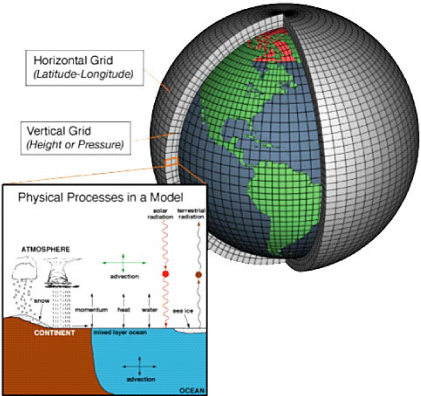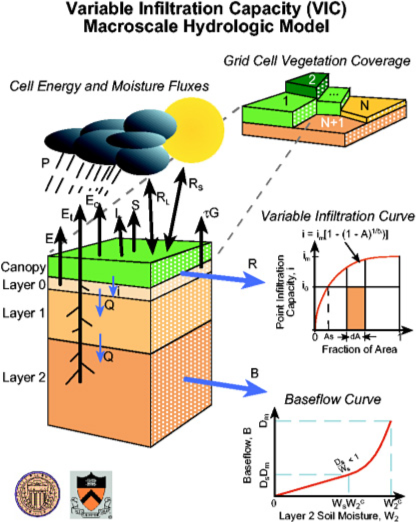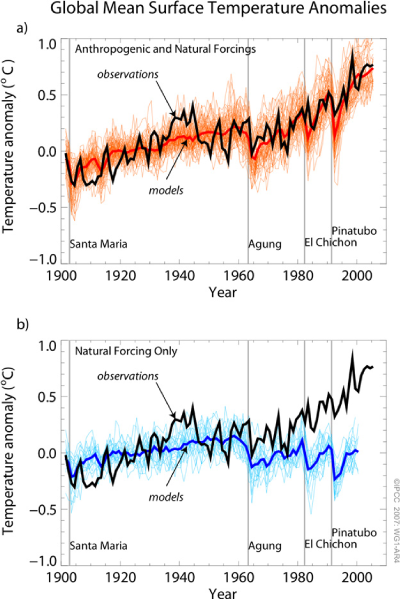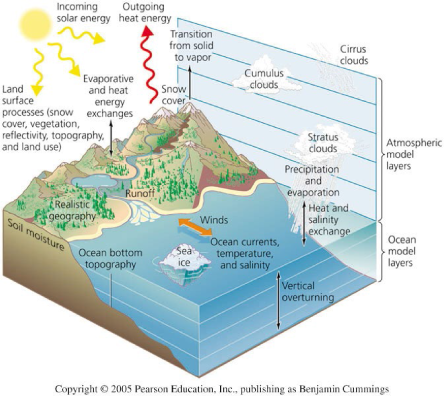How do we know the climate is changing?
SC2 Collects and Analyzes Skagit Data
Scientists, including SC2 scientists, collect and analyze data to understand how our world works. Scientists use this data to:
1. Understand physical relationships and calculate mathematical relationships
a. When air temperature increases, snowpack and glacier mass decrease and water temperature increases.
2. Identify trends over time
a. Measurements show a 50 percent decrease in glacier surface area in the Skagit Basin between 1900 and 1998. (Granshaw, 2002)
3. Calibrate, verify and validate models
Climate Models Put Pieces Together: WORLDWIDE
Climate models use data and mathematical relationships to project future trends. Figure 1 shows some of the physical Earth systems and interactions that are incorporated into climate models. Scientists create computer models of the global climate system (Figure 2). To “run” a model, scientists divide the planet into a three-dimensional grid, apply differential equations to calculate physical properties (wind, heat transfer, etc.) within each grid cell and the interactions

Figure 2. Schematic of global climate system computer models Source: http://celebrating200years.noaa.gov/breakthroughs/climate_model/welcome.html
Climate Models Put Pieces Together: LOCALLY
Information from global climate models can be increased in resolution to project more specific, local changes and conditions (Figure 3).

Figure 3. An example of a hydrologic model that translates global and regional climate data to inform how the Skagit River will likely respond.
What Does the Future Hold?
Climate models are not magic boxes that predict the future, but tools that illustrate a range of possible scenarios. Policymakers, stakeholders and citizens use model projections to guide decisions. Scientists have been refining and improving climate models for decades. These models consistently support the conclusion that humans are contributing to the increase in global temperatures: natural climate factors alone cannot explain the rapid rise in temperature at the end of the 20th century (Figure 4). These results also highlight the importance of incorporating both human and natural inputs in future climate projections.

Figure 4. Red graph: Model results relative to observed data, including natural and human (“anthropogenic”) climate impacts (“forcings”). Blue graph: Model results including only natural impacts on climate, like volcanic eruptions. The output from 20 different climate models was averaged into this representation. Source: Intergovernmental Panel on Climate Change, 2007

